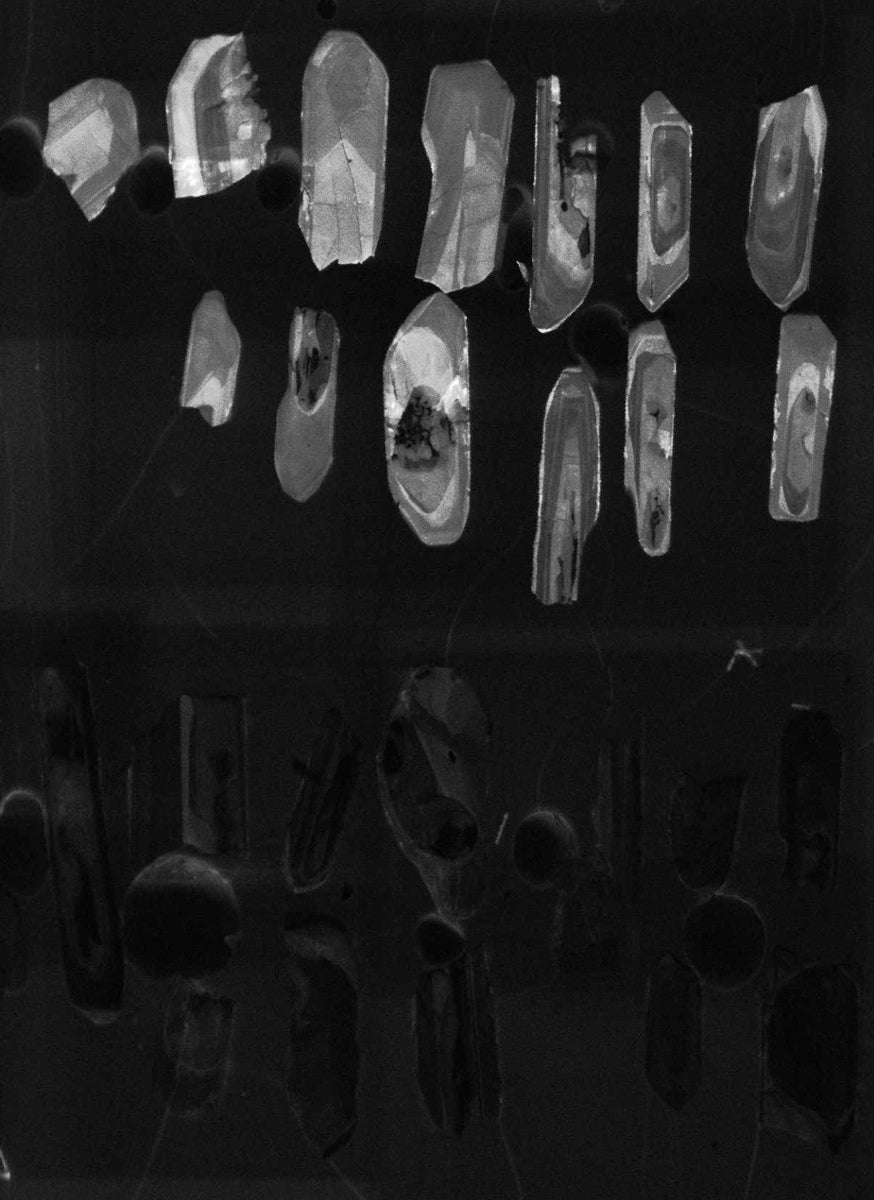These SEM-based cathodoluminescence (CL) photomicrographs of zircon crystals illustrate the positive enhancement of CL emission resulting from high-temperature (900°C) annealing for 60 hours. All four rows of zircon crystals are from the same 1.1 Ga granitoid, and contain 100 to 200 ppm U and 150 to 250 ppm Th. The upper two rows contain crystals annealed at 900°C for 60 hours prior to mounting and imaging; the lower two rows which are barely visible were not annealed. The same CL photomultiplier gain settings were used to collect all of these images. The enhancement of CL emission [also noted by Nasdala et al. (2002) Chemical Geology 191:121–140] is dramatic and provides a strong argument for annealing all zircons prior to in situ analysis; other benefits of pre-mount annealing include improvements in LA-ICPMS precision and accuracy related to more reproducible laser-sample coupling, and the ability to send selected grains directly to chemical abrasion for ID-TIMS.
